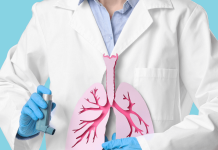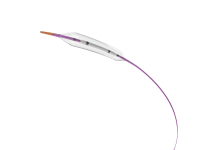FEops announced its new release of FEops HEARTguide™, including an AI-based anatomical analysis of MSCT images for the pre-operative planning of structural heart interventions. With this introduction, physicians don’t need to do the measurements manually anymore, which will help streamline their workflow and gain time. It’s not a black box, FEops still offers physicians the option for performing the analysis themselves. This new release, reinforced by the strong PREDICT-LAA clinical evidence, enables time-efficiency and better-informed clinical decision making for structural heart interventions.
“We are staying ahead of the market with the introduction of this unique combination of predictive simulation and AI-enabled anatomical analysis”
FEops goes way beyond anatomical analysis with its unique predictive simulations, revealing how transcatheter structural heart devices will interact with a specific patient’s anatomy prior to implant. This helps physicians in selecting the optimal device size and position, improving procedure efficiency and outcome.
“We are staying ahead of the market with the introduction of this unique combination of predictive simulation and AI-enabled anatomical analysis,” said Peter Mortier, PhD, co-founder, and CTO of FEops. “This extension of FEops HEARTguide™ enables a time efficient workflow for heart teams by providing them a fast, semi-automated and accurate anatomical analysis for efficient and standardized planning.”
Dr Ian Buysschaert, St Jan, Bruges, Belgium also recognizes the clinical value of having the AI-based anatomical analysis in FEops HEARTguide™: “The PRECISE-LAA trial results, presented earlier this week at CSI Frankfurt, confirm the positive impact of FEops HEARTguide™ on the decision process for LAAO interventions in daily clinical practice. The key value of FEops HEARTguide™ remains the simulation options predicting different sizes and positions, but the new DICOM interface will allow physicians to better visualize and edit the anatomical measurements, which is extremely useful for the operators.”
Matthieu De Beule PhD, co-founder and CEO of FEops continued: “FEops is on track to install the new standard in personalized treatment planning for structural heart interventions and brings us on the verge of global commercialization. With over 7000 patients treated worldwide in 327 hospitals spread over 28 countries, FEops is ready and uniquely positioned to extend its cloud-based platform outside of the structural heart space by leveraging its AI know-how, regulatory expertise, physician network and clinical footprint. This is putting us in pole position to extend our game-changing predictive digital twin offering to other applications with our upcoming Series C round.”
RELATED: USMI Receives FDA Approval for New Robotic Surgery Device – The Canady Flex RoboWrist™
About FEops HEARTguide™
FEops HEARTguide™ is a unique, stand-alone cloud-based procedure planning environment. It combines digital twin-based predictive simulation with AI-based anatomical measurements to provide clinicians and medical device manufacturers with first-ever insights into the interaction between transcatheter structural heart devices and specific patient anatomy – preoperatively. Such insights have the power to improve clinical outcomes in real-world hospital settings, as well as to accelerate research and development of novel device-based solutions.
FEops HEARTguide™ is available in the USA for use in LAAO with Amplatzer Amulet™, Watchman™, Watchman™ FLX and in EU, UK, Canada and Australia, FEops HEARTguide™ is available for use in TAVI and LAAO.
About FEops
Privately held FEops, headquartered in Gent, Belgium, is a digital health scale-up altering the course of heart disease by providing physicians with unique digital tools to treat the right patients with the right technology at the right time. FEops is supported by Valiance, Capricorn partners, PMV and the European Innovation Council (EIC).
Connect with us at www.feops.com or on LinkedIn at www.linkedin.com/company/feops, or contact us via info@feops.com.






